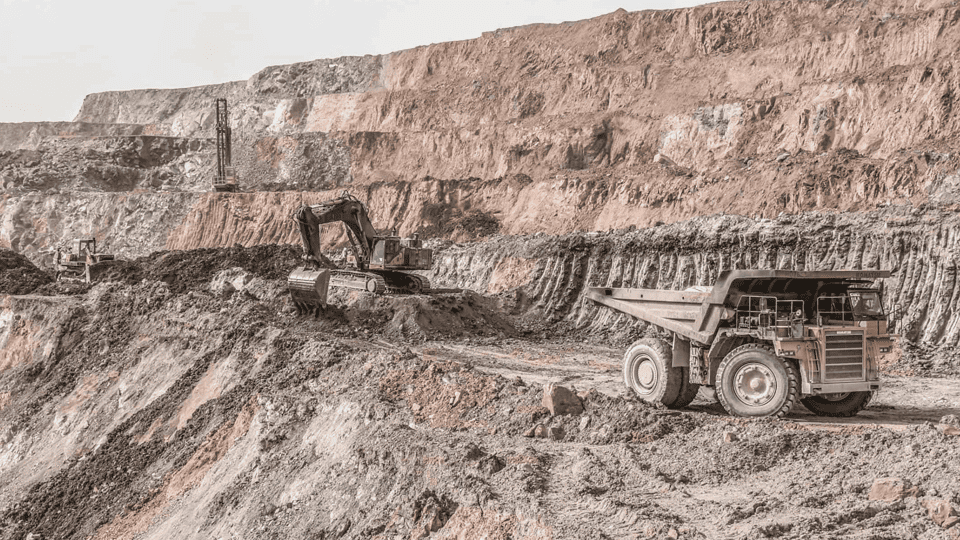Most people assume that deep sea mining will be significantly more expensive than land-based mining because the location of deep sea minerals in the ocean can be remote and very deep. However, these assumptions are not correct—the reality is that deep sea mining will have a significantly lower cost.
Let’s consider the four biggest parameters of mine economics:
- Ore grade
- Number of minerals in the ore
- Infrastructure required to access the mine location
- Rehabilitation mine site costs
Ore Grade
200 years ago, ore grades for copper and nickel were approximately 20%, meaning that only 80% of the ore was waste. Small amounts of the ore needed to be mined to get large quantities of the valuable metals. Over the last 200 years, huge amounts of mining have occurred, resulting in all the high-grade ore on land being exhausted. New mines, such as the GigaMetals Turnagain Project located in north-central British Columbia, have nickel grades of just 0.2%—resulting in 99.8% waste. This adds massive costs, given the amount of ore that must be mined and processed, and the waste managed.
In the Clarion-Clipperton Zone (CCZ) of the Pacific Ocean, the nickel grade has been measured to be 1.3%, much higher than most new land-based mines.
Number of Minerals in the Ore (By-Product)
On land, you normally find one or two valuable minerals together in an ore body. Usually, one ore is dominant, such as nickel, and another ore, such as cobalt is present in smaller quantities. This improves the unit economics because the mine generates additional revenue from the second by-product.
Polymetallic nodules from the deep seabed contain four metals: nickel, cobalt, copper, manganese, and several rare earth elements. This generates additional revenue and means that in the CCZ, the nickel equivalent grade when factoring the credits for the by-products is 3.2%.
Infrastructure Required To Access The Mine Location
Given that we have been mining for millennia, all the convenient locations have been exhausted. We are left with remote locations with no existing infrastructure for new land-based mines. As a result, the transport infrastructure must be constructed. Often, this starts with a landing strip for a plane and then evolves to a highway and often a train line to transport out the mined metals. In addition to transport infrastructure, a village needs to be constructed to host the workers at this mine. Finally, the mine and village require a large amount of power, meaning either a power plant will need to be constructed, or a high-voltage connection to the power grid is required. All of these add a significant amount of cost, time, and environmental permitting.
Deep sea mining, by comparison, reuses ships and ports. No new transport infrastructure needs to be constructed. In the case of Impossible Metals’ technology, we go further and do not use a dedicated mining ship. We retrofit a launch and recovery system to existing bulk transport ships. This has massive cost savings and avoids the requirements for ship-to-ship transfers in the ocean. Ship transport is the lowest cost of any transport medium and is not material to the overall cost of deep sea mining.
On land, the ore is typically three-dimensional, resulting in either massive open pits or deep tunnels. This adds costs to ensure the mine is safe and will not collapse. It also makes resource estimation harder, as many core samples must be taken to estimate the three-dimensional resources. In contrast, polymetallic nodules are only found on the surface of the seabed—avoiding the need for blasting, cutting, or tunneling—making resource definition much easier.
Rehabilitation Mine Site Costs
In the West, exploitation permits require significant government bonds purchased at the start of the mining to pay for the rehabilitation of the mine at its end of life. In the past, mining companies would make promises to fill in the open pit mines and replant trees, but at the end of the mine (~25 years), all that was left was a shell company with no assets. This ultimately left the government on the hook to pay for the rehabilitation. As a result, many millions of dollars are now required to be paid upfront.
Deep sea mining for polymetallic nodules using selective harvesting leaves the habitat viable. As such, no rehabilitation is required—saving this significant cost.
Summary
The mining industry accounts for costs in various ways, but the two most accepted methods are cash costs (C1) and all-in-sustaining costs (AISC). The AISC method gives a more thorough picture of the operations, reflecting all the ongoing expenses required for operations and production. It includes all the ongoing annual costs but excludes any upfront capital or other project expansion costs.
In addition, unit production costs can be stated in a by-product or co-product manner; the former deducting any by-product revenues from total expenses to determine nickel production costs, while the latter would prorate the total expenses based on the respective commodity’s revenue contribution to the total revenue base. If it was producing today, either of these methodologies would place Impossible Metals’ operation into the first quartile of the nickel cost curve. Nodules constitute a diverse set of recoverable metals (e.g., Ni, Co, Cu, Mn), which would provide valuable by-product credits resulting in low cost of production.
Given the high ore grade, four metals in one ore, low infrastructure costs, and no rehabilitation required, deep sea mining for polymetallic nodules will be the lowest cost of all forms of mining. In addition, the ocean seabed is the world’s biggest source of nickel, cobalt, and manganese, and selective harvesting will have the lowest environmental impact.
By 2030, we expect that no new mines on land will be required for nickel, cobalt, and manganese, and all demand can be delivered from the seabed using selective harvesting and in-time recycling.
Cover Photo by omid roshan on Unsplash


